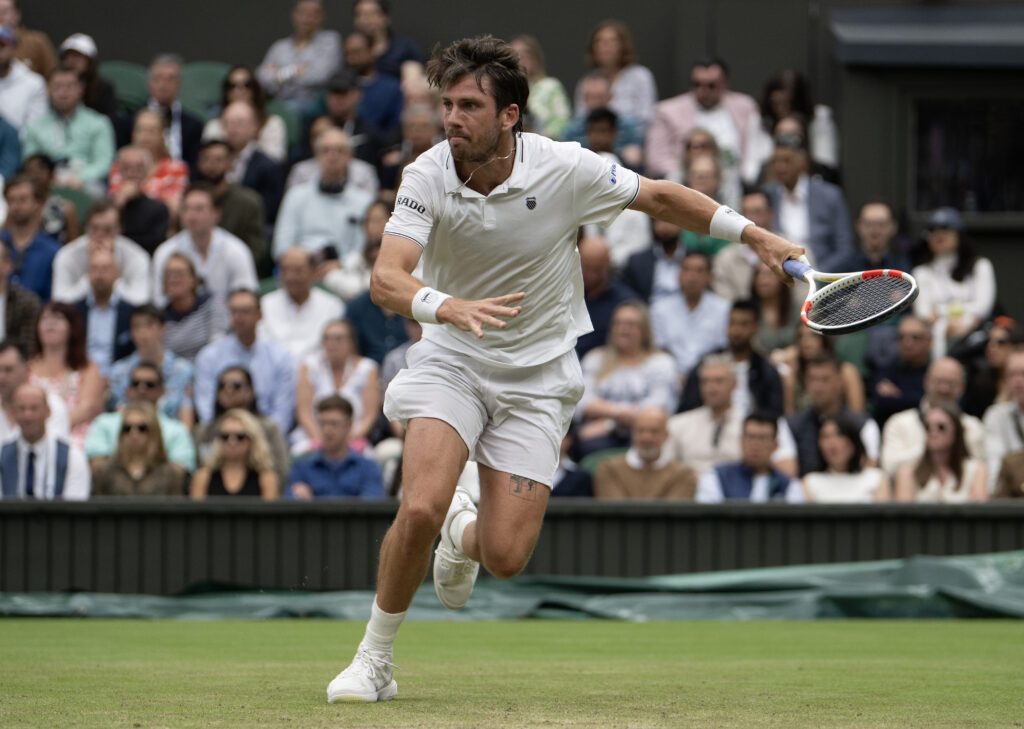Cameron Norrie’s story of quietly amassing millions via tenacity is remarkably similar to that of many contemporary athletes who prioritize grit over opulence. Few tennis fans pay attention to the strong hands making a fortune beneath the spotlight as they argue over the greatest of all time. Cameron’s estimated net worth as of mid-2025 ranges from $6 million to $9.98 million, contingent on investments, sponsorship renewals, and asset evaluations. His $12.25 million in prize money, which he earned by persistently making it to deeper rounds and competing against top-seeded opponents rather than by making headlines during his Grand Slam runs, accounts for the majority of his wealth.

Norrie has turned regular appearances into a lucrative career by utilizing reliable physical form and an incredibly clear tactical mindset. He has significantly improved his performance on hard courts, especially during his 2022 Indian Wells victory and clay-court triumphs, which helped him reach a career-high ATP No. 8. Rankings are temporary, but that moment, which came about as a result of consistent training and meticulous preparation with coach Facundo Lugones, marked the end of a long ascent. Currently ranked 81st, he continues to be a mainstay of British tennis, with much less media attention but a remarkable ability to maintain financial stability.
| Full Name | Cameron Norrie |
|---|---|
| Date of Birth | August 23, 1995 |
| Birthplace | Johannesburg, South Africa |
| Nationality | British (Represents Great Britain) |
| Turned Pro | 2017 |
| Height / Weight | 6’2″ (188 cm) / 181 lbs (82 kg) |
| Playing Style | Left-handed, two-handed backhand |
| Career Prize Money | $12.25 million (approx., 2025) |
| Estimated Net Worth | $6 million to $9.98 million (2025) |
| Endorsements | K‑Swiss, Babolat, Rado, Lexus, Illuvium |
| Highest ATP Ranking | No. 8 (September 2022) |
| 2025 ATP Ranking | No. 81 (as of May 19, 2025) |
| Relationship | Dating Louise Jacobi (fashion designer) |
| Verified Source |
His earnings off the court, which combine athleticism with contemporary branding, tell a different tale. Norrie’s endorsement income is about $2 million a year. These are carefully cultivated partnerships rather than randomly selected logos sewn across jerseys. His clothes are supplied by K-Swiss, which reflects his neat, structured style. When handling his rackets, Babolat makes sure that his grip and swing are constant. However, it’s the extra details—his partnerships with Lexus automobiles, Rado watches, and the blockchain-based gaming initiative Illuvium—that show a player crafting not just a tennis career but also a persona. This choice of sponsors is consistent with a subtle yet very effective marketing image.
His choices of luxury are deliberate and conspicuously modest. Norrie leads a refined yet modest lifestyle in contrast to peers who show off their private planes and diamond-encrusted wristbands. He is characterized by his understated yet elegant attire, train travel, and introspective interviews. He has recently become somewhat of a symbol for how quiet focus can still lead to significant commercial success due to the contrast between his low-key image and high earnings.
That idea of gradual improvement is emphasized by Cameron’s Grand Slam record. He had a 7-7 win-loss record overall and advanced to the fourth round of the 2024 Australian Open. He routinely made it to the third round of the French Open between 2021 and 2023. His greatest showcase is still Wimbledon, where he advanced to the semifinals in 2022 after winning 11 of his 18 games. His deepest run came in the fourth round of the 2022 US Open. Although these outcomes don’t garner much attention, they show tenacity—remarkably resilient performances that outlast fleeting attention.
His relationship with longtime partner Louise Jacobi makes the link between emotional balance and financial resilience especially clear. Louise, a fashion entrepreneur from New York, lost her job shortly after they started dating. Unexpectedly, that turn of events helped them forge a closer bond without interruption. Their relationship took off after she accompanied him to Vienna shortly after they first met through friends in New York. Despite their hectic schedules, their time together during the pandemic strengthened their relationship.
Jacobi started her own lifestyle brand, Studio Virgo, after working for Calvin Klein. Their mutual support of one another’s careers reflects their shared appreciation of discipline, structure, and aesthetics. She once said of Cameron that he was very dependable, calm, and even-tempered—qualities that are reflected in his playing. In contrast to the demanding nature of ATP travel, he enjoys playing golf, backgammon, and Rubik’s Cube challenges with his trainer on his days off. With a playful wish for more skiing vacations, she alludes to an equally adventurous future beyond tennis.
Norrie’s career path feels surprisingly natural in the context of contemporary tennis, where careers are frequently based on flamboyant branding and early burnout. Long-term value can be achieved through poise and strategic brand alignments, as demonstrated by players such as Rafael Nadal and Roger Federer. On a different scale, Norrie’s trajectory is comparable. His career serves as a model for aspiring players who may lack explosive forehands but have long-game sensibilities thanks to strategic alliances, consistent prize money, and disciplined lifestyle choices.
He has created a particularly novel economic model for middle-tier players by combining professional humility with consistent training. Norrie demonstrates that, with proper management, being in the Top 50—albeit not always in the spotlight—can still be extremely lucrative in a sport that is frequently controlled by a small number of extremely wealthy individuals. His wealth is the result of strategic decisions made over many seasons rather than a single breakthrough moment.
Resilience and subtle reinvention frequently outperform fanfare, as he has demonstrated since beginning his professional career in 2017. The goal of Cameron’s ascent is not to reach a peak too soon or fall too quickly. Rather, it’s about maintaining a career with both economic and emotional intelligence, tactical insight, and consistent improvement. Norrie’s story is more than just statistics for aspiring athletes or fans who are interested in athlete finance; it serves as an example of how professionalism, brand alignment, and personal balance can make tennis a sustainable business.
